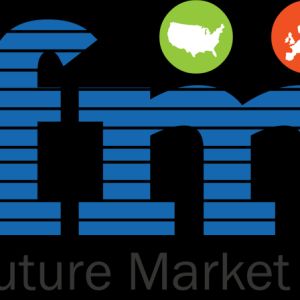Spinal Fusion Devices Market - Global Industry Insights, 2025Posted by Pareesh on January 16th, 2018 Spinal fusion, also referred as spondylodesis is an orthopedic surgical process used to join two vertebrae. This procedure can be performed on the cervical, thoracic or lumbar areas of the spinal cord. Spinal fusion restricts movement between the fused vertebrae after the surgery and are mainly performed for relieving pain caused due to pressure on the spinal cord. Several other pathological conditions that can be treated with the help of spinal fusion surgeries include spondylitis, scoliosis, spinal fractures, spinal stenosis, and kyphosis. Spinal fusion techniques involve bone grafting from the patient or from a donor termed as auto graft and allograft. Along with the one graft, several other hardware devices like cages, plates, and screws are required to carry out the surgical process. These devices are known as spinal fusion devices. These devices are helpful to restore the functionality and alignment correction of the spinal cord. These devices mainly comprise cervical fixation devices, interbody fusion devices, and thoracolumbar devices. Request a sample copy of this report: https://www.coherentmarketinsights.com/insight/request-sample/1211 Rising geriatric population to fuel the demand for spinal fusion devices Rising demand for spinal fusion devices is attributed to surge in the geriatric population developing spinal pain. According to Tohoku Journal of Experimental Medicine, around 11.4% of the population in Japan was recorded to be 73 years of age and above, out of which around half of the patients were suffering from lumbar spinal stenosis (LSS) and cervical myopathy in 2016. Additionally, according to the World Health Organization, 2013, 250,000 to 500,000 spinal cord injuries are encountered worldwide. Rising incidence of spinal diseases is in turn, increasing the demand for spinal fusion devices. Market Taxonomy: On the basis of device type, the global spinal fusion devices market is segmented into:
On the basis of surgery type, the global spinal fusion devices market is segmented into:
Inexpensive treatment facilitation to boost market growth On the basis of geography, the global spinal fusion devices market is segmented in to North America, Latin America, Europe, Asia Pacific, Middle East, and Africa. North America accounts for the major market share and is expected to retain its dominance in the near future due to high-end facilities dedicated to the orthopedic healthcare sector and increasing government assistance to improve facilities for better treatments. In parallel, Asia Pacific is expected to possess high market potential due to increasing healthcare expenditure as well as rising incidence of spinal injuries. According to a research survey conducted by Department of Orthopedics, Tianjin Medical University, China, in 2012, the incidence rate of spine surgeries across various regions in Asia ranged from 12.06 to 61.1 per million. Moreover, low costs of spinal procedures in countries of Asia Pacific such as India have fueled the demand for spinal fusion devices. According to Aarex Medical Services, 2016, over 2000 hospitals in India facilitated spinal surgeries, out of which, over 30 multi-faculty hospitals conducted spinal surgeries at 30-70% lower costs than countries in developed economies such as the U.S. and Europe. This in turn, is driving the population in the U.S. towards India for spine surgeries, thereby propelling growth of the spinal fusion devices market in Asia Pacific. Increasing government funding for R&D is propelling growth of the global spinal fusion devices market The primary driver of the global spinal fusion devices market is the rise in number of spinal injuries and spinal cord related disorders. Others factors responsible for driving growth of the global spinal fusion devices market include increasing obese population worldwide and growing adoption of sedentary lifestyle, improper and bad posture habits while sitting, driving, and working, which in turn, causes postural defects. Additionally, increasing number of government initiatives to increase R&D revenues pertaining to innovation and development of new treatment methods are also boosting growth of the market. For instance, the North American Spine Foundation and the American Academy of Orthopedic Surgeons funds institutions are conducting R&D activities for spine-related surgeries across the globe. In 2017, the foundation funded numerous organizations and institutes, including Academy of Spinal Cord Injury Professionals and American Academy of Neurology. Click here to know more about this report: https://www.coherentmarketinsights.com/ongoing-insight/spinal-fusion-devices-market-1211 Major players operating in the global spinal fusion devices market include Stryker Corporation, Medtronic Plc., NuVasive Inc., Depuy Synthes, Inc., Zimmer Biomet Holdings, Inc., Orthoflix International Holding N.V, Globus Medical, and LDR Holding Corporation. About Coherent Market Insights: Coherent Market Insights is a prominent market research and consulting firm offering action-ready syndicated research reports, custom market analysis, consulting services, and competitive analysis through various recommendations related to emerging market trends, technologies, and potential absolute dollar opportunity. Contact Us: Mr. Shah Like it? Share it!More by this author |


